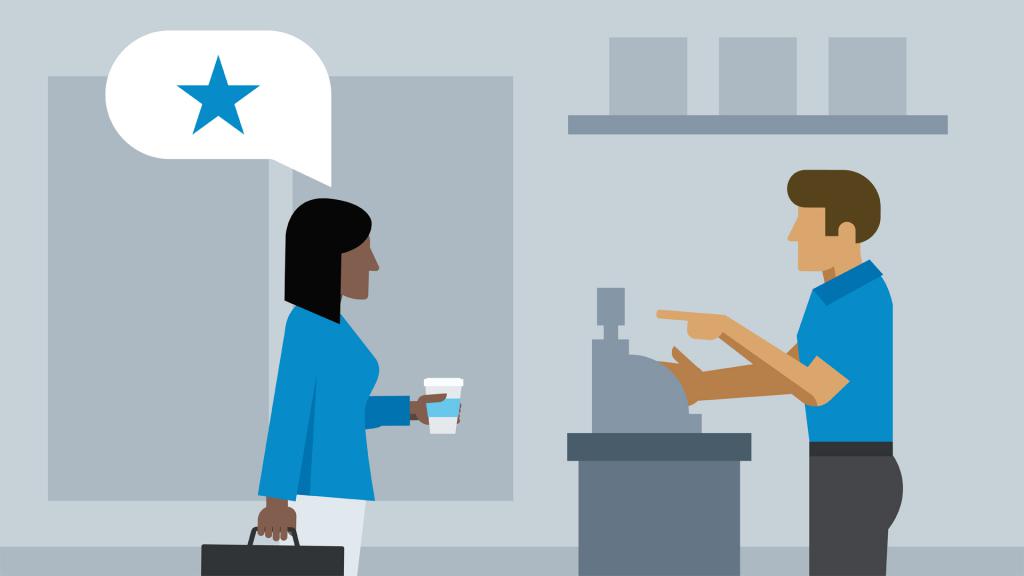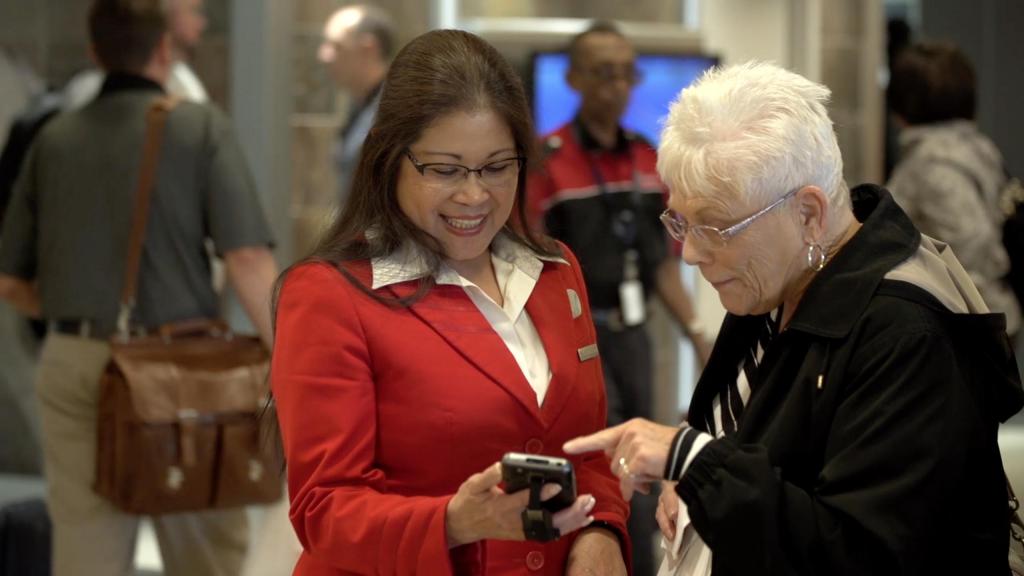Types of consumers can be divided depending on the independence of decision-making on the purchase, emotional coloring, behavior strategies and many other factors. Determining the type of buyers is half the success of selling a product or service. Having correctly determined the type of client and choosing a strategy for communicating with him, you can not only sell the product at a given time, but also increase customer loyalty in the future. It is important to be able to turn a customer from a new one into a constant and loyal to a particular company or store.
Types of buyers
Specialists, conducting market research, divided customers into groups. There are several basic types of buyers.
For example, potential buyers. They are those who are interested in the product, often use it. However, he prefers to make purchases from competitors. It is important to focus on the benefits of buying in the seller’s store. It is possible to use loyalty cards.

New customers are those who first visited the store. They are completely unfamiliar with the service or product presented. The seller’s goal is not primarily to sell a product or service to a new buyer, but to interest him. In other words, such a buyer should associate positive emotions with this store and be willing to come back.
Another type of customer is customers without preference. If you give an example at grocery stores, then buyers without preferences are ready to make a purchase in any of them, depending on its location. They can also visit a particular store for the company. The seller’s goal is to offer the customer something that will set him apart from the competition.
Regular customers prefer the same store. Even being in the other end of the city, they will certainly reach their favorite store and make a purchase in it. Enlisting the sympathy of such a buyer, it is important for the seller to maintain a relationship and not lose the customer.

Loyal customers are the main achievement of a store, as well as its main capital. Since they not only make purchases in this store, but also recommend it, creating free advertising. Word of mouth, created from positive reviews, is the most effective advertising for any business.
Types of customers by behavior strategy
According to the behavior strategy, 5 types of buyers are distinguished:
- Customized. They make a purchase of goods for personal consumption. Most often these are asocial people living alone.
- Family They are the largest group of consumers. An individual does not make purchasing decisions personally, but rather with his family.
- Intermediaries. Such buyers make a purchase not for personal use of the goods, but for the purpose of resale. For them, the liquidity of the goods is important.
- Procurement. They make industrial purchases.
- Clients representing public institutions. The procedure for purchasing goods is highly formalized.
Types of clients depending on emotional coloring
Customers, whom experts identify as a group of motivated, most often fully realize what they want, soberly assessing their needs and requirements. Buyers of this type are well versed in the product or service they want to purchase, they can give adequate arguments for or against, and in some cases even argue with the seller. They rarely trust the store’s administration; they can be stubborn and persistent. The goal-oriented buyer sees as his goal to prove his own awareness and importance.In a conversation with a motivated buyer, it is important for the seller to remain calm, not to react to the emotional attacks of the client. If the customer really understands the subject of the dispute, it is important for him to show this, then the purchase process will accelerate.

The type of customer’s personality, the all-knowing customer is very similar to the purposeful, but has a stronger emotionality: he is ready to argue to the last, even if he is not right. Attempts to identify unprofessionalism or ignorance of a fact about a product from a seller. Tries to educate the seller how to sell the product, how to communicate with the client. In dealing with this type of customer, it is important not to switch to the same methods, to remain calm. The seller should convincingly provide reliable facts, take the "lessons" of the buyer, at the right time to give the client a compliment.
There are also quite outgoing customers. Experts have combined them into a group called talk lovers. The sociability of this type of customer knows no boundaries, they like to joke, chat not only about the product, but also on abstract topics. They are quite loyal, sympathetic to the seller and generally trust him. If you bring the necessary arguments, this type of buyer will happily make a purchase. There is no difficulty in selling a product to such a person, it is important to ensure that the conversation does not go far from the topic of the conversation, to ask only questions on the topic, preferably a closed type.

There are also indecisive clients. Such procrastinators procrastinate, get stuck even on insignificant shortcomings of the product, ask too many questions. They are suspicious, in most cases they tend to distrust sellers. It is important to stay calm in dealing with this type of customer. Encourage them to buy right here and now, focus on the possible risks and losses during procrastination. However, it is not worth it to put pressure on an indecisive buyer.
In contrast to outgoing customers, experts single out silent buyers as a separate group. Such create the impression of closed people, incredulous. When talking with the seller, they can answer a question with a question, ignore the seller's questions. Inclined not to rush with the purchase. It is important for the seller to ask a large number of questions to the silent people, both open and closed. Pause, allowing the buyer to consider the answer. Show your friendly attitude, focus on the strengths of the goods. A silent buyer can also be offered to test the product in action, this will help speed up the purchase process.

There are also types of arguing clients. They like to disagree with the seller, even if he brings convincing arguments. They are characterized by a high degree of suspicion, such buyers are always trying to find a seller’s weak spot. The seller should remain calm and patience, be positive and benevolent.
Impulsive clients exist, they tend to show their own emotions too brightly. It is important to carefully listen to the buyer, his position and opinion and according to the wishes to offer the goods. You should not argue with this type of customer.
Positive clients usually listen carefully to the seller, do not try to find a weak spot. For them, the seller is the one who really advises a good product. It is important not to relax with such clients, despite the high loyalty, confirm each argument with facts.
Types of customers depending on behavior
Specialists distinguish separate groups of clients depending on their behavior. It is important for the seller not only to determine the type of buyer depending on his behavior, but also to interact with him correctly.
The first type is the aggressor. Such clients are self-confident, they are categorical, easily come into conflict. They are laconic, concise, and ask few questions. Such customers always require a discount, regardless of the level of solvency.It is important to respect the client in communication with the aggressor, but you do not need to endure excessive rudeness. The seller should demonstrate the goods to the buyer, briefly and in the case go through each item characteristics. For a good knowledge of the buyer should give him a compliment.

The second type of client is the demonstrator. This type of client tries to establish close contact with the seller, often switches to "you" in communication, asks a lot of questions. For the client, it is not the purchase itself that is important, but the acquisition process. The seller needs to maintain eye contact with the buyer, correctly translate the conversation from an abstract topic on the topic of goods. If the customer made a purchase, it is necessary to note a good taste and spend some more time communicating with him.
The third type of buyer is an expert. These people are short enough, restrained, balanced. Keep distance. They do not like too much discussion, they need to clearly and concisely describe all the positive aspects of the product. Do not put pressure on such buyers. They rarely make purchases right away, however, if they are satisfied with the service, they will definitely return for the purchase.

The fourth type of customer is passive. They are uncertain, the head is usually pulled in shoulders, a stooped posture. Their speech is inconsistent, a lot of extra hand movements, questions are inconsistent. It is important in communicating with this type of customer to be active, to fully list the positive aspects of the product.
Types of customers depending on the degree of responsibility
Specialists also distinguish 3 types of buyers, the differences of which are in their style of behavior, awareness of responsibility for the purchase.
The first type is "parent." Such clients are not able to hear their interlocutor, they are stubborn, firmly in their position. They love to teach their interlocutor. It is pointless to convince such a client, so you should delicately share your opinion without imposing it. Such clients like it when the interlocutor joins a role-playing game in the role of a "child."
The second type is "adult." It is characterized by poise, seriousness and reasonableness. She communicates politely and businessly with sellers, usually such communication goes smoothly.
The type of customer “child” is a creative person, he is creative in his approach to the buying process. This type can be divided into several subtypes:
- "The eccentric child." They love to be the center of attention. If they feel the proper level of attention, they become positively inclined, but if suddenly this type of client decides that attention was not enough, they begin to become unbearable.
- "Obedient child." Such clients in most cases try to relieve themselves of responsibility and shift it to the seller. They ask a large number of questions, for example: do I need it? It is important not to let the client shift responsibility. Because if third parties say to the client that the purchase is not good, such a person will make a refund and accuse the seller of buying it.
- "Quiet pool". Such customers know what they need, but are too shy to say so directly. Therefore, often, after listening to all the advice of the seller, they leave the store without a purchase. It is important to show patience with such clients, not to show excessive activity, to give the floor to the client himself. An overly active seller’s monologue will only kill the customer’s desire to share information about their needs.
Types of customers depending on purchase motive
There are 4 types of buyers in the market, depending on the motive for the purchase.
One motive is prestige. The type of clients whose motive for the purchase of goods for which is prestige is in dire need of public recognition. They want to show their exclusivity to the external environment. They are too emotional, their speech is demanding and loud, decisive movements. The appearance of this type of buyers with a needle.Outerwear in most cases is unbuttoned. Important characteristics of the product for them: "new", "best", "fashionable".

The second motive is profit. Customers who are looking for benefits from the product, confident, self-contained. They prefer to dress modestly and discreetly, all the zippers are closed. It is important for them how profitable the acquisition will be. They are easy to attract with all kinds of promotions, gifts and discounts.
Security is also one of the reasons for buying. Logical, purposeful. For them, it is important to have various certificates, quality marks. New products are not for them, it is important for them that the product is tested and familiar.
The motive is friendship. This type of customer is characterized by openness. They are positively tuned to the seller, easily find common ground. A good attitude towards this type of buyers, warm communication will incline them to purchase.
Types of customers depending on their relationship to price and quality
Buyers are also divided into 2 types, which differ in relation to price and quality.
Sellers need to separate buyers according to price sensitivity criteria. If the buyer is interested in the price, then he will look for exactly the offer that suits him on this parameter. The seller’s arguments about quality are likely to be meaningless. Such customers can keep various offers with discounts.
If the consumer does not care about the price, then most likely he pays attention to the quality of the goods. Most often, such customers are conservative, they prefer to choose the goods of one brand.
In addition, there is another classification of customers according to price and quality. Consumer innovators strive to buy all the newest and highest quality. They rarely pay attention to the value of the goods.
Activists also rarely pay attention to factors such as quality and price. They are not innovators, but also impulsively make purchasing decisions. Are driven, quickly take the side of opinion leaders. Progressive buyers may make purchasing decisions depending on whether the product has proven itself. They also pay attention to the price. Materialists are absolute conservatives. They choose goods that have long been familiar, of high quality.
Customer Type Definition
For effective work with the client, it is important to determine its type correctly and in time. What types of buyers appeared before the seller can be determined by some factors:
- Definition of speech. If the client is restrained, we are confronted. Also, a closed person can be characterized by too much flow of words without much meaning.
- The tone of voice is also important. A loud or quiet voice indicates that the client is comfortable with communication, if the voice is in the middle key, the client is worried.
- Also, the type of client can be determined by gestures, appearance, look and facial expressions. An open-minded person has active gestures, facial wrinkles. A direct stubborn glance indicates that we are a closed person.
Types of markets
There are also several types of seller and buyer markets.
With a perfect market, there is a large number of consumers and sellers. The same product is presented by a large number of sellers, may vary in price. There is absolutely no discrimination both against buyers and sellers. Entrance to the market is free. In the monopoly market, only one seller is represented with a large number of buyers. Other sellers are being discriminated against. There are several buyers in the oligopolistic market, as well as several sellers.
Types of sellers
Sales staff are also divided into several groups:
- The order receiver works with customers who have already made a purchase decision.
- The sales consultant informs the client about the functional and consumer qualities of the product. Not involved in customer search.
- A sales representative works in the territory of the buyer, actively searches for customers.
- The presenter promotes the product and informs customers about its benefits.
Service types
There are several types of customer service in the modern economy. One of them is self-service, it is suitable for customers who know their needs firmly and do not need additional information flow.
There is also personalized service. With this type, the store should have a sufficient number of sellers so that each customer is not left without attention.
Also in the modern market, the production line method is actively used. Its use can be seen in fast food restaurants. For a short period of time, the seller needs to serve the maximum number of customers in such an enterprise. At the same time, the types of buyers are unimportant, because the consumer has already decided on the purchase. The provision of services does not require special communication skills of employees.
The types of sellers and buyers in the modern economy are divided according to various factors. These may be factors of price, quality, prestige, security. The types of sellers and buyers may also vary by market.
